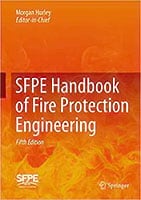In this episode, I talk with two highly esteemed fire protection engineering professionals: Chris Jelenewicz, P.E., FSFPE, the Interim Chief Executive Officer at SFPE, and Stephen Dale, P.E., CFPS, ARM, the Director of Technical Services at The Cincinnati Insurance Companies. We explore the diverse world of fire protection engineering, discussing its scope, essential skills, and career opportunities. Whether you’re considering a career in this field or seeking guidance to excel, this episode has you covered.
***You can view the video version of this episode here.***
Engineering Quotes:
Here Are Some of the Key Points Discussed About Fire Protection Engineering:
- Fire protection engineers analyze the unique hazards and occupant characteristics of a building and use science and technology to design systems that can control fire, alert people to danger, provide means of escape, and protect the structure itself. They work closely with structural engineers to ensure the building can remain standing during a fire and provide a safe environment for firefighters to operate in.
- There are many career paths available to fire protection engineers, including government, insurance, manufacturers, and research labs. Mid-career professionals can pivot to fire protection engineering by taking online classes, joining professional organizations, and getting involved in testing organizations or test standard committees.
- Fire protection engineers work on buildings with unusual hazards, such as tall buildings, casinos, stadiums, and large warehouses. They use performance-based design to address unique fire protection issues and collaborate with other engineering disciplines to ensure safety measures are in place.
- Fire protection engineering is a multidisciplinary field that encompasses various areas such as thermodynamics, statistics, mechanical and civil engineering. It involves explosion control, human behavior, life safety, and passive fire protection. It’s not just about sprinkler systems or fire alarms. It is involved in the development of standards such as the National Electric Code and the Life Safety Code, which are used in buildings all over the world.
- Collaboration and communication skills are crucial for success due to the need for coordination with other disciplines. Knowledge of thermodynamics, hydraulics, chemistry, physics, statistics and probability, human behavior, and interior finishes are important in the field. Understanding specific codes and NFPA standards is also necessary for competence in fire protection engineering.
- SFPE provides technical knowledge and guidelines for fire protection engineering through the SFPE Handbook, engineering guidelines and standards, a magazine, education courses, and conferences. They also work with NFPA to produce the Journal of Fire Technology and offer online courses and webinars, including a course on ethics for Fire Protection engineers.
- The Fire Protection PE exam covers four categories: Fire protection analysis, fire dynamics, active and passive systems, and egress and occupant movement. The exam evaluates a fire protection engineer’s knowledge in fire risk assessment, performance-based design, fire, and smoke behavior, water-based systems, special hazards, smoke control systems, fire alarm, and communication systems, human behavior in fire, fire load, and defining exits.
- The SFPE offers a comprehensive 18-week AP exam review course, with prerecorded sessions and live sessions with 11 different subject matter experts for each topic, aimed at helping individuals understand all areas of the exam. The course also includes test banker questions and a reading list for further preparation.
- If you are interested in pursuing a career in fire protection engineering, you should reach out to local chapters or attend webinars to learn more about the field. Start with a simple course or read one chapter at a time to explore specific areas of interest.
- The SFPE website is a great resource for information on the fire protection engineering profession. It offers information on career pathways, colleges and universities with PS programs, and contact lists for those programs. For those already in the engineering profession, there are three online programs in the U.S. that offer the opportunity to work as an engineer and obtain an MS degree focused on taking the engineer to the next step in becoming a fire protection engineer.
More in This Episode…
In the Take Action Today segment of the show, Chris and Stephen talk about reducing fire risks and navigating a career in fire protection engineering.
About the Guests:
[su_spacer]
Stephen Dale, P.E., CFPS, ARM

Chris Jelenewicz, P.E., FSFPE

Books Mentioned in This Episode:
SFPE Handbook of Fire Protection Engineering
Resources and Links Mentioned in This Session Include:
SFPE 2023 PE Exam Review
The Cincinnati Insurance Company
NFPA Codes and Standards
FPE Magazine
Connect with Stephen Dale, P.E., CFPS, ARM, on LinkedIn
Connect with Chris Jelenewicz, P.E., FSFPE, on LinkedIn
This Episode Is Brought to You by SFPE

We would love to hear any questions you might have or stories you might share on fire protection engineering and the skills needed to launch your career journey.
Please leave your comments, feedback, or questions in the section below.















